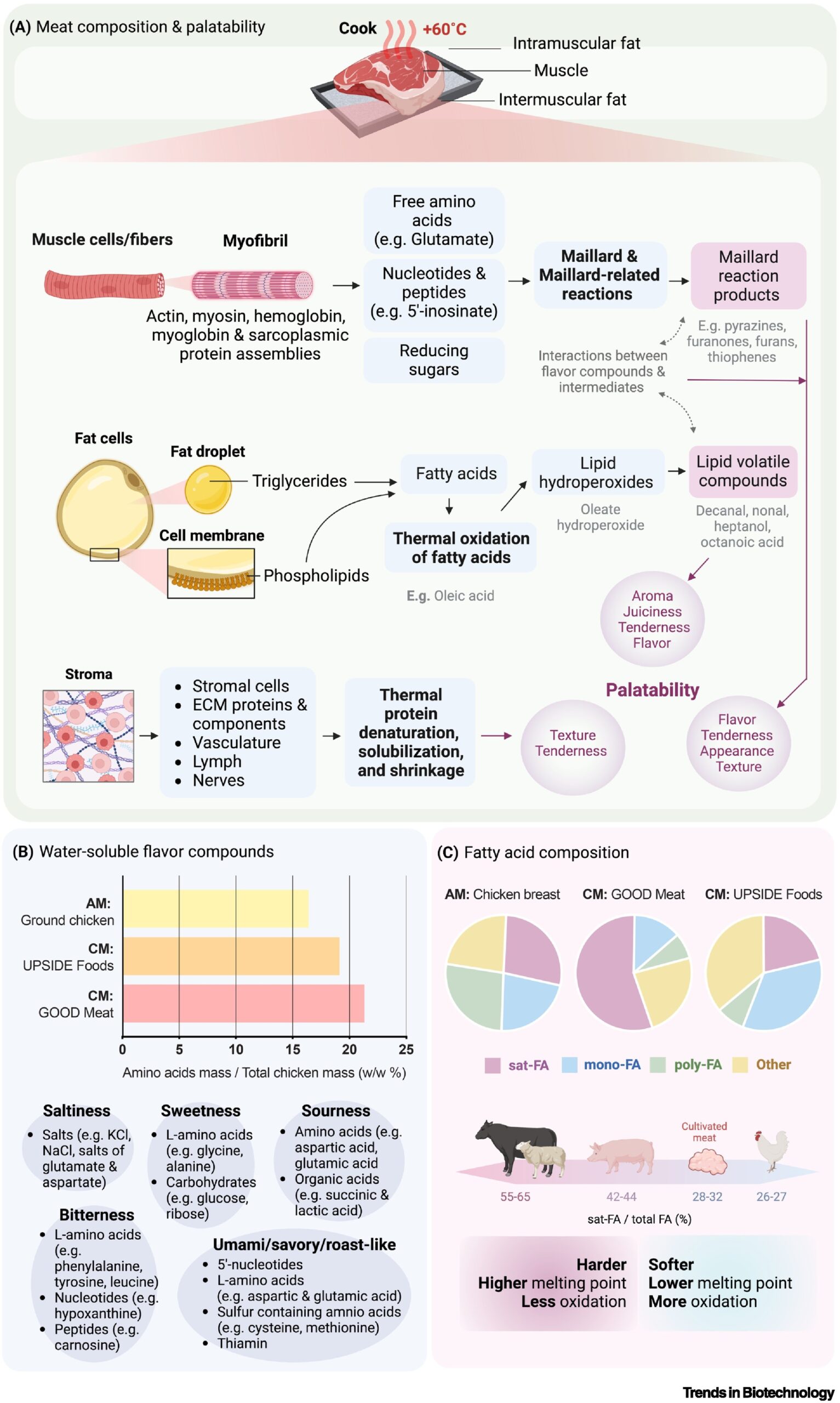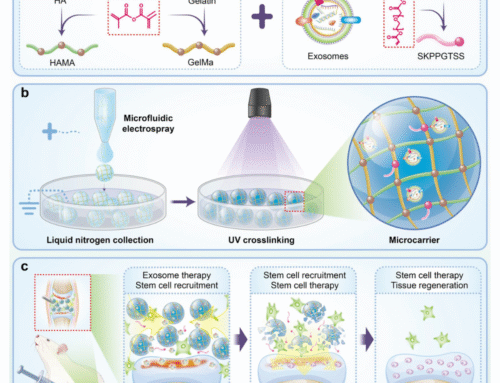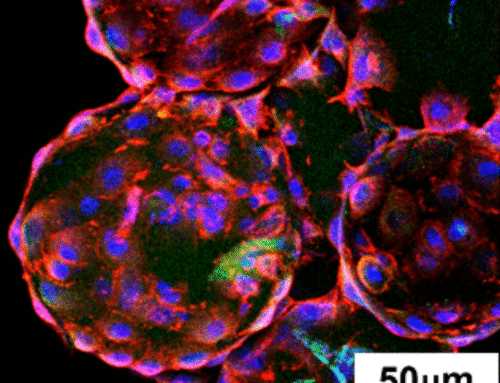We are pleased to announce the publication of a significant review by our very own Dr. Christopher J. O’Keeffe, in collaboration with esteemed scientists from the University of Sydney, University of New South Wales, and University of the Sunshine Coast. This review, published in the prestigious journal Trends in Biotechnology, focuses on a crucial aspect of food science: enhancing the palatability of cultivated meat (CM).
 Abstract Summary
Abstract Summary
Cultivated meat represents a transformative approach to food production, merging advancements in biotechnology with sustainable practices. Already approved for consumption in regions such as Singapore, Israel, and the USA, CM faces the challenge of meeting consumer expectations for taste and overall eating experience. The review by Dr. O’Keeffe et al. explores the science and engineering behind improving CM’s palatability, which encompasses its taste, aroma, texture, tenderness, juiciness, and color. The authors discuss strategies for cell-line selection, differentiation, and post-processing, which are pivotal for achieving the desired structural and compositional qualities of meat.
Enhancing CM Palatability: Key Insights
The journey from a concept to a consumer product has highlighted the importance of scalable, cost-effective, and environmentally sustainable production methods for CM. Moreover, navigating regulatory pathways has been a critical step in bringing CM to market. However, as the field evolves, the focus has increasingly shifted to how these products can appeal to consumers not just ethically and environmentally, but also sensorially.
To address this, the review details scientific and engineering approaches to enhance CM’s palatability. It underscores the importance of post-processing steps following muscle cell proliferation, which are vital for imparting the qualities that make meat appealing to consumers.
Collaborative Research for a Sustainable Future
This publication exemplifies the collaborative effort required to advance the field of biotechnology, particularly in sustainable food production. It represents a significant step towards not only understanding but also implementing strategies to improve the appeal of cultivated meat, marking a pivotal movement in the quest for sustainable and consumer-friendly alternatives to traditional meat.
The insights provided in this review are essential for researchers, industry professionals, and policymakers alike, as they navigate the complexities of developing palatable, sustainable food options for the future.






Leave A Comment